Fiat Show-Car saved from Paint Overspray w / HD video
by Todd CooperiderEvery now and then we professional detailers get one of those jobs that we simply shake our heads about…both at the condition of the vehicle before we start on it, and the transformation that we put them through. Some of these performances can be defining moments in our careers given the level of correction that we achieved. These are the ones that everybody talks about, and ones that we always rank at the top of our professional highlight reels!
While I’ve had the opportunity to work on some crazy details in the past on highly collectable and valuable vehicles, this one takes the prize in terms of how much work would be required to save a highly prized vehicle from the brink of disaster. This 1979 Fiat Spider might not be the most valuable car in the world, but it had a lot of sentimental value to the owner, so the treatment that it deserved would be no different than a 7-figure car.
The history of this 1979 Fiat Spider
This Fiat was originally purchased by the current owner’s father back in 1984 when he was just 16 years old, and it was a common bond that the two shared for many years. They worked on it together, they drove it together, and they went to shows in it together. This vehicle was much more than transportation…it had become part of the family.
When his father passed in the fall of 1999, the owner inherited the Spider and eventually formed a business based around the maintenance, restoration, and performance modifications of the Fiat Spider, and through that he has built the reputation as one of the foremost experts on the model throughout the U.S. and many parts of Europe.
This particular vehicle has won first in its class at the prestigious Ault Park Concours d’Elegance, has been featured several times in national print magazines, and was recently photographed for Hemmings Sport and Exotic Car Magazine.
As you can clearly see, this Fiat Spider has a history of excellence, and a strong sentimental value for its owner.
The Setup: Industrial Paint Overspray!
I received a phone call from the owner of the car, and he said that he had an issue with heavy paint overspray on his Fiat, and knew there wasn’t anybody else around that he would trust with such a special vehicle. He said that it was “pretty heavy”, and wanted to get it by for me to look at.
Apparently the car had been sitting in a storage facility, and a company had been hired to paint all of the garage doors in the building. Well, the car wasn’t covered, so when the painters (painting with compressed air…not rollers!) finished the job, the poor Fiat was covered in green paint. Now I’ve seen paint overspray issues before, and typically it’s a lot of droplets here and there. Given this, I told him to bring it by and leave it with me for a few days so that I could evaluate the damage, and determine the proper course of action before I could even make an estimate on the cost of repairs.
I was totally unprepared for the level of paint overspray that I was greeted with when he pulled up! It wasn’t overspray, it was spray-over! There was a solid layer of green paint on the blue car, and when you looked at it in the right lighting you would think that it either had 5 years of dust and dirt all over it (think of a barn-find), or it had been fully wetsanded.
As you can see in this photo, the overspray was extremely heavy…
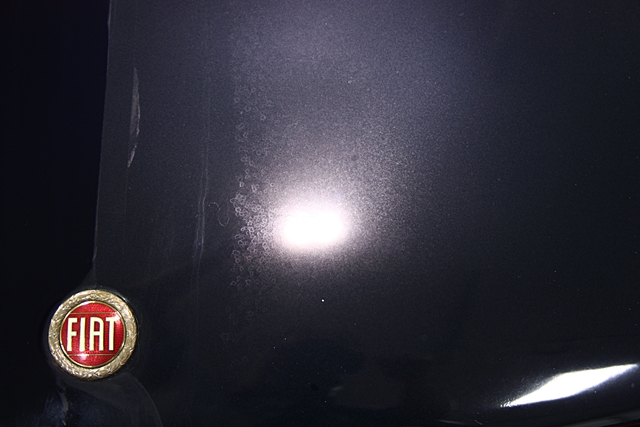
Determining the proper course of action
Before we figure out the best way to fix the problem, let’s take a closer look at what we have to work with. We have an old car that was re-painted at one point in it’s life (back in the early eighties), we have an owner that is very proud and particular about the car, and the Fiat has a storied past. Given all of this, and after speaking with the owner to get his take on it all, we decided that the best course would be one that was as least aggressive / invasive as possible, and preserve as much of the history as we could. As professional detailers, it is our responsibility to get to know the owner of the car to determine their wants, needs, and concerns and to use our experience and knowledge to establish the most responsible course of action to bring the car back.
While some may have opted to just hit it hard and fast by sanding it down by machine and bringing it back through polishing, it simply wouldn’t have been the right approach in this case. Not only would this method remove a lot of material, it would also have altered the texture in the paint and turning it into something that the client didn’t necessarily want or need. The goal here was to restore the finish to where it once was (with improved gloss and clarity of course) without reducing any original orange peel or texture.
Since I was faced with the task of removing ridiculously heavy overspray, but unable to use traditional aggressive methods, I knew that I had my work cut out for me!
I first attempted every least aggressive method in my arsenal…chemically softening the overspray and then attempting clay, applying wax to the surface first to act as a slippery barrier to then clay, etc, etc. None of that worked, and I simply couldn’t break through the heavy paint barrier. It was stuck, and didn’t want to come off.
The final approach was to use the lightest abrasive sandpaper available by hand. The first pass was with 8,000 grit specialty paper that did a great job of removing overspray, and then I refined it more using 12,000 grit paper by hand. This process was aggressive enough to remove the overspray, but it only left light marring and didn’t alter the texture of the finish (goal accomplished).
The next step was to determine the best compounding and finish polishing processes to remove all of the light sanding haze and defects from the paint and then to refine it to a high level of gloss and clarity. The single stage paint proved to be quite finicky in the finishing process, but the best combination proved to be with Meguiar’s Microfiber Cutting Discs and D300 compound on the D/A, followed by Sonax NTPC and a black finishing pad also on the D/A. More on this process later…
I taped off a section of the trunk lid for my testing section, and this was used to determine the exact methods for the entire vehicle, to calculate the cost estimate, and to provide to the company that did the painting as they / their insurance company would be responsible for the damage. In cases like this, full photo documentation is needed not just for educational articles like this, but they’re critical for everybody involved.
Here you can see just how bad it was when you compare the corrected side on the left to the overspray on the right. Keep in mind that he right side is just overspray…this is not after wetsanding!

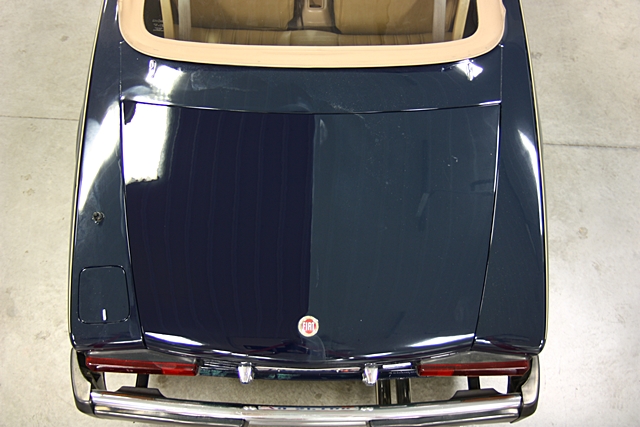
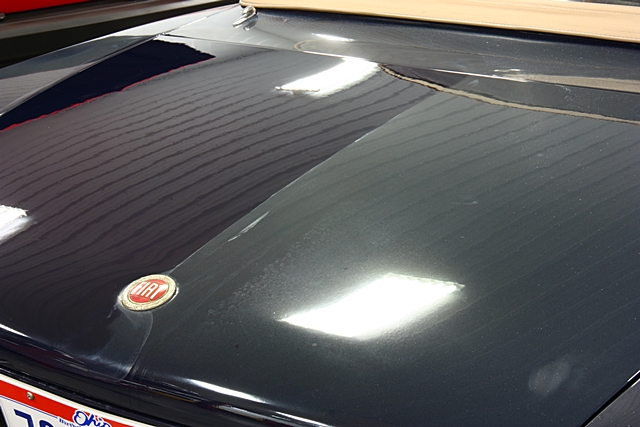
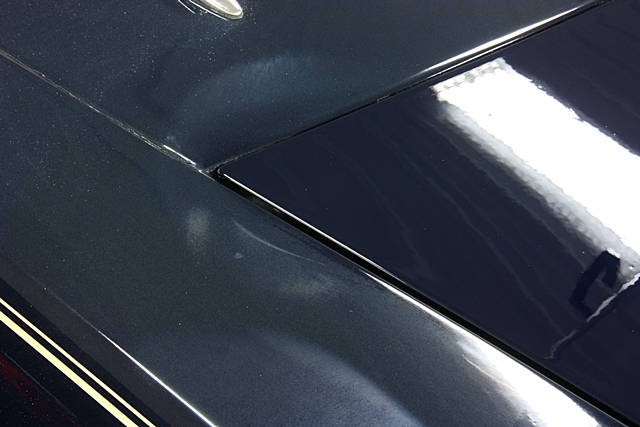
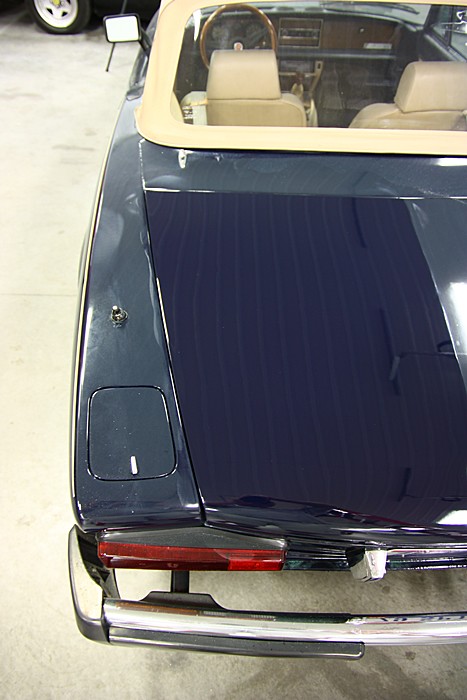
Here you can see the overspray section in the sunshine and see just how flat the finish is.
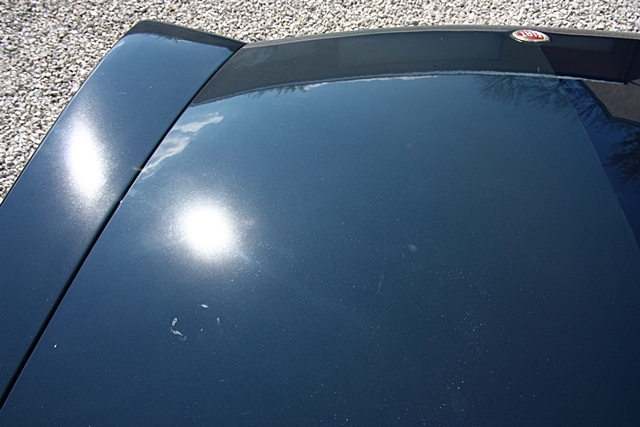
This picture really does a great job of capturing the severity of the problem we have in front of us.

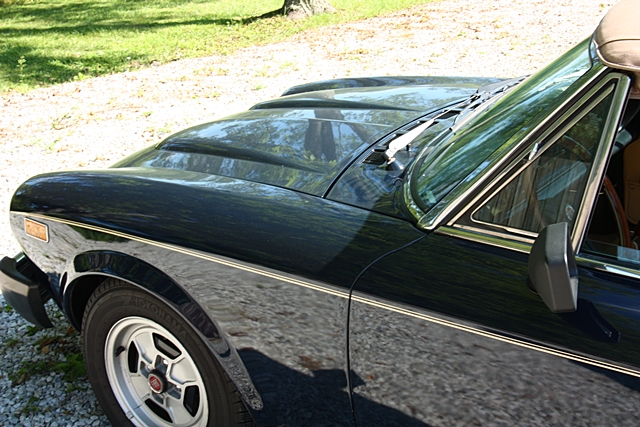
When doing a job like this, and when the goal is to achieve as much clarity and purity in the (finicky) finish, it is imperative that a system is established to get the paint to finish down to such a fine level that you will see nothing but pure reflections in all light sources, at all distances. So in the sunshine, fluorescent lighting, or in high intensity LED inspection lights it needs to look superb and needs to achieve that from 3 feet and at 2 inches away. It can be tough on the eyes to continuously inspect the finish, but you literally have to get your face a few inches from the surface of the paint while looking at the light reflections to ensure that you’re achieving total correction without even the slightest hint of swirls (if using a rotary), or light and very small D/A “squigglies” or pigtails when using a D/A polisher. I’ve seen plenty of polishing jobs out there that will pass the LED test from 3 feet, but if it doesn’t meet the 2″ test, then it’s not properly finished! And when you’re dealing with soft, finicky paint like was on this Fiat, the challenge becomes even greater. Don’t think for a minute that you’re going to take a job like this to a body shop because (a) they would simply want to re-paint it, (b) they would have done heavy sanding, and (c) they simply cannot finish paint down to this level of purity.
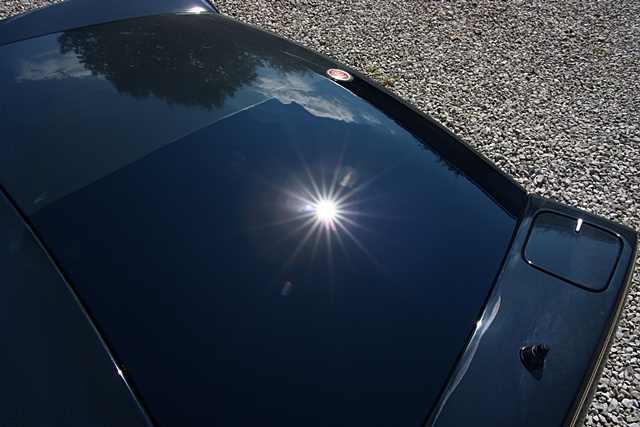
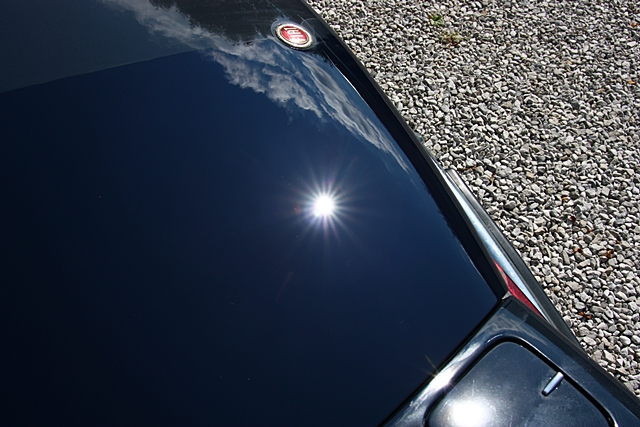
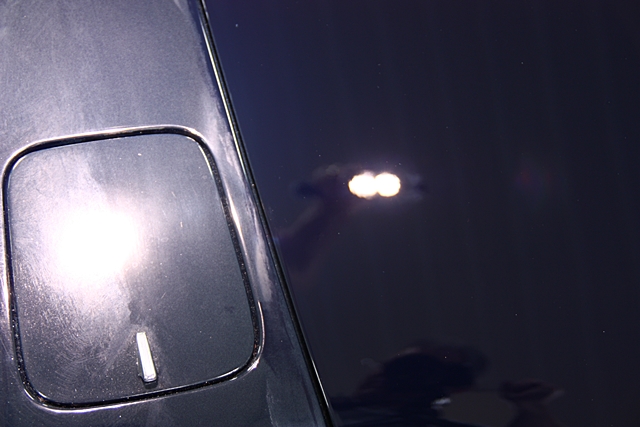
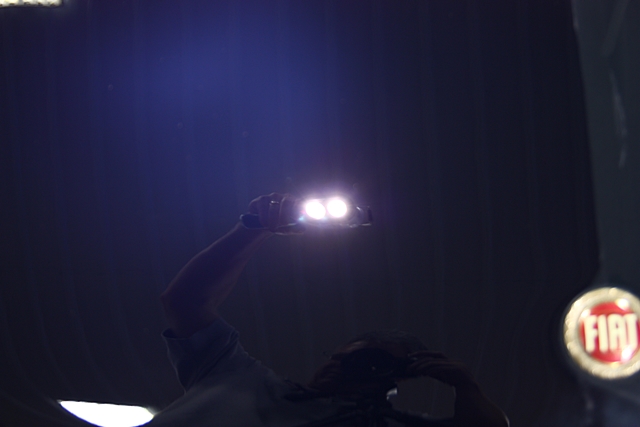
Fiat Spider: Paint Correction and Concours Preparation Detail
Now that I have my system and gameplan all set, I had one other issue to deal with…a quick deadline given the fact that the car was scheduled to appear in a local Italian car show that very next weekend! So not only did I have to remedy the paint overspray issue, I had to do it quickly and have the car prepped for show so there were plenty of other small details that needed to be addressed. The pressure is on…
Given the fact that the paint was so soft and finicky, I decided that the best way to approach the car would be to handle all other areas first so that I didn’t have to worry about the possibility of anything touching the paint while I was working on chrome, or trim, or any other part of the car.
To start off, I worked on removing the green paint from the glass, which fortunately was a bit easier than removing it from the paint. All that was required was an aggressive claying to pull all of the overspray.

Just after one small section you can see just how much green paint was being removed from the glass.
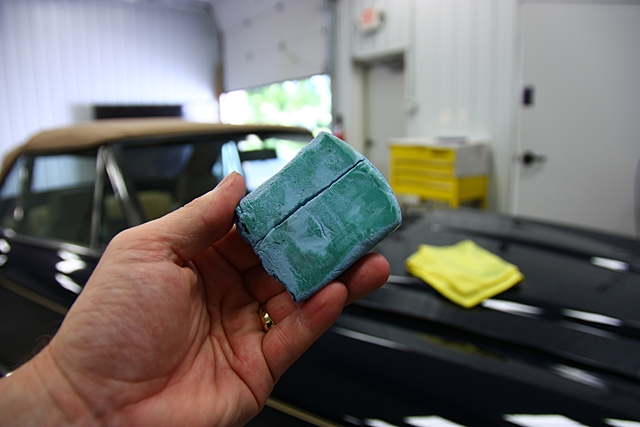
After removing all of the paint contamination from the glass, it was also polished and sealed.
Now onto the chrome trim…which there’s a lot of on these old cars! By using a little bit of pressure by hand with Klasse AIO and a microfiber towel, I was able to remove all of the overspray, and polish / seal those surfaces in one step.
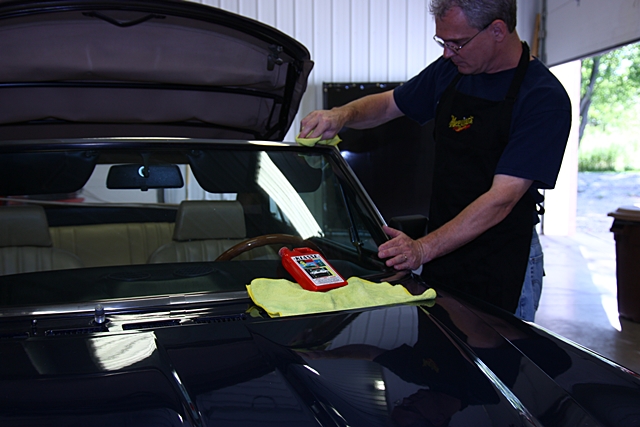
I taped off a section on the rear bumper so you can see the level of paint overspray. With a little bit of patience and time, the chrome cleaned up quite nicely.
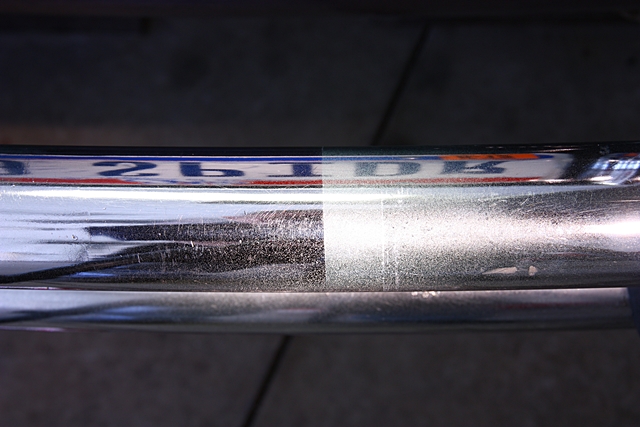
While I was at it, I noticed that many of the plastic pieces and trim were a bit faded, so I decided to treat them as well. In many cases it’s the small details like this, and the improvement in contrasts that really pull a detail all together.
Before:

And after: (plastic treated with a trim restorer from Sonax that is not yet available in the U.S.)
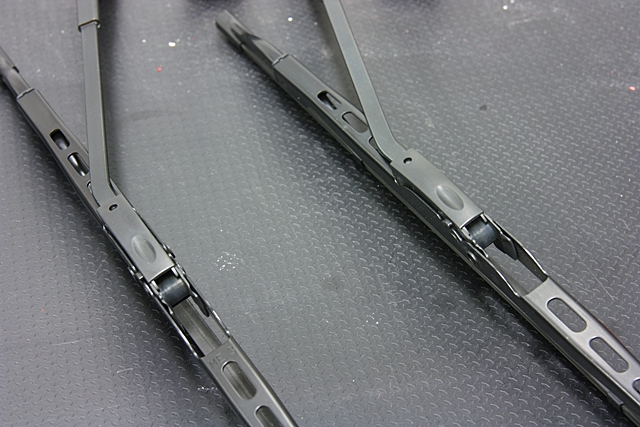
The plastic trim inside the front and rear bumpers were looking a bit tired, so they got cleaned up as well.
Before:
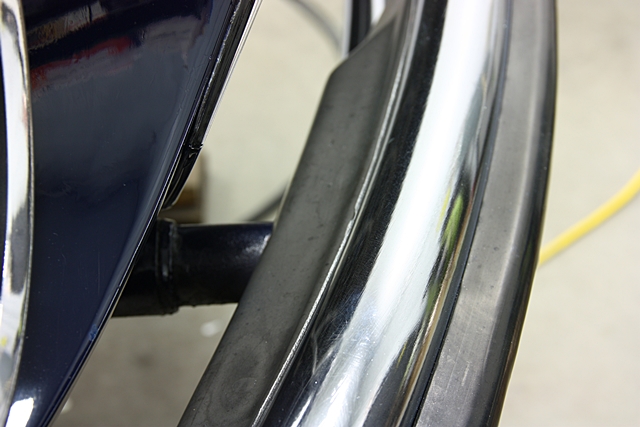
And after:
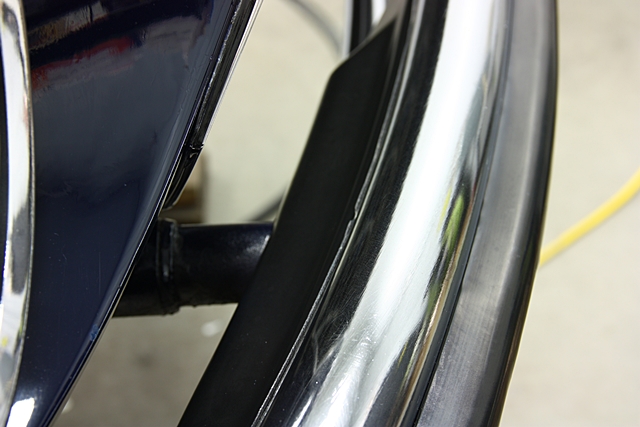
Let’s move on to paint correction…
Before I started in with correction by machine, I had to delicately work the tight areas by hand where the machine either wouldn’t fit, or where there were thin edges that could easily be damaged. I found that by slowly working these areas with D300 compound by hand, I could remove the overspray and polish the surfaces at the same time.
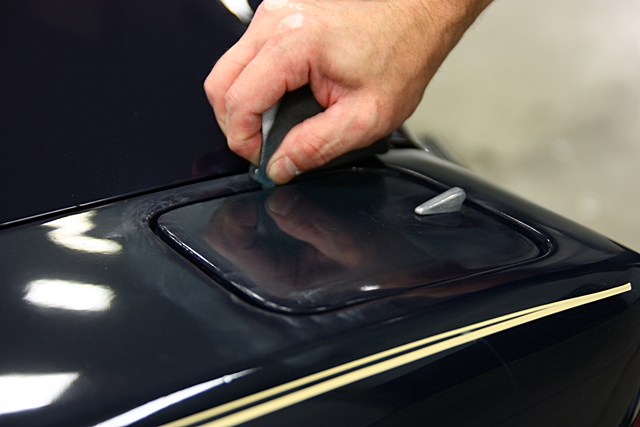
Up around the wipers I was able to polish the tight areas out first by hand
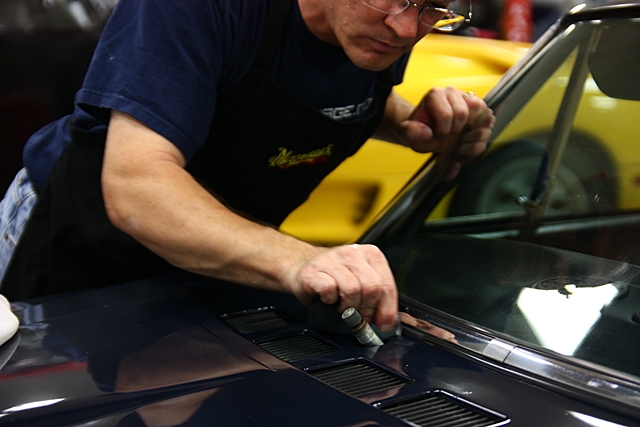
…and then work the surrounding areas with the D/A, a Megs MF Cutting Disc, and Megs D300 compound.
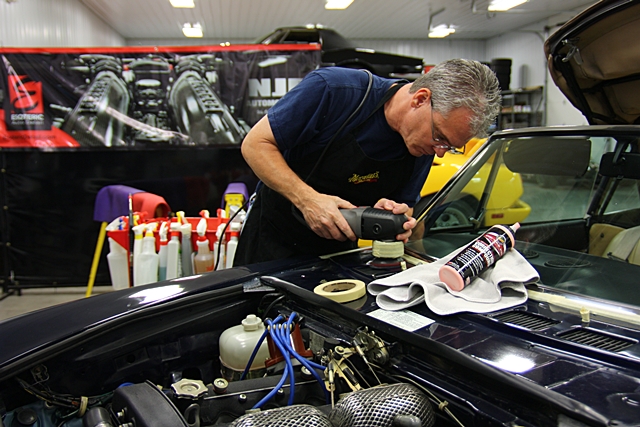
The overspray wasn’t just on the outer surfaces…it also found its way down into the edges and seems where the machine obviously wouldn’t reach. So I had to also hand polish the edges and inside areas around the trunk lid (shown below), the doors, the fuel filler cap, and the hood. Tedious work indeed…
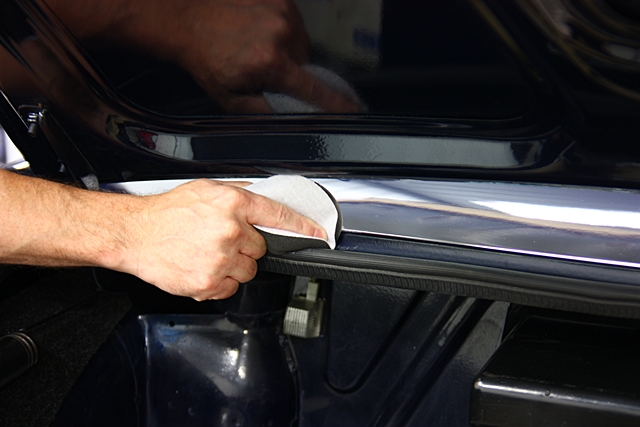
Now it was time to move on to the major surgery part of the detail! On the heaviest areas, I started off by lightly sanding the overspray off using 8,000 and 12,000 grit paper (sandwiched in foam, so no sanding block was necessary).
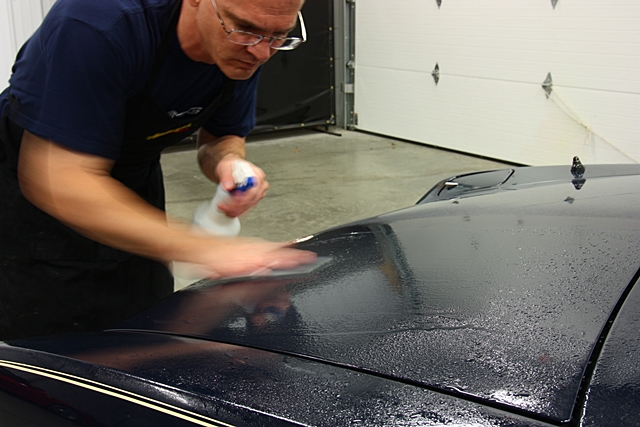
And after sanding, I washed the surfaces to ensure it was completely clean and free of any sanding debris / residue prior to machine polishing.
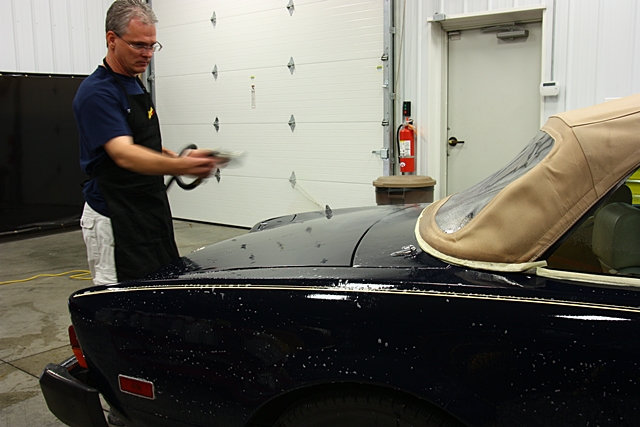
Now I was left with some light sanding marks to correct in the compounding stage.
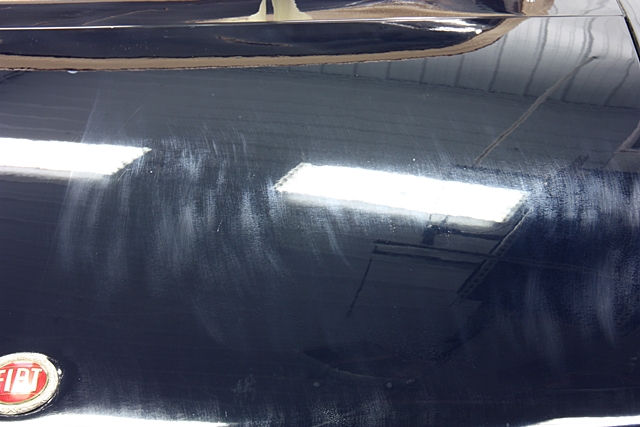
For the compounding stage, I used Meguiar’s Microfiber Cutting Discs combined with their D300 compound. This easily took care of any sanding marks and previous swirls / scratches on the surface, and it was the safe and responsible method around all of the uneven and thin edges of this old vehicle.
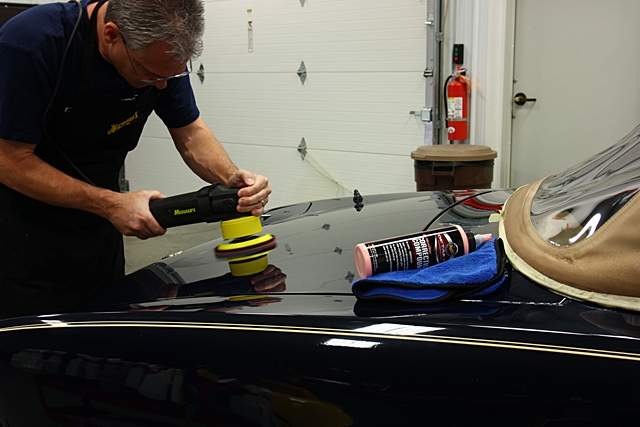
Now for the areas of the car that weren’t covered as heavy with overspray, I decided to test a method to see if I could save some time. I was able to remove the lighter overspray (still very heavy by normal standards) by just using the Megs MF Cutting Discs and the D/A. What I did differently however was work in smaller sections, and completely clean out the MF pads with compressed air after each small working area. Normally you would only need to do this after each working area (like a complete door). With this method, I was able to safely remove the overspray without it loading up the pad and significantly marring the finish. In addition to frequent cleaning, I also changed out pads after one or two working areas. Is there anything these MF pads can’t do?
When dealing with the pin striping on the car, I taped all the way to the edge on one side and polished that area.
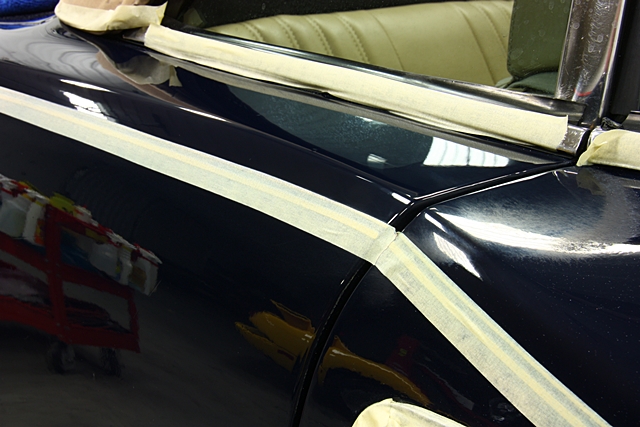
Then moved the tape to the other side and worked that area. The inside portion of the pinstriping was delicately worked by hand.
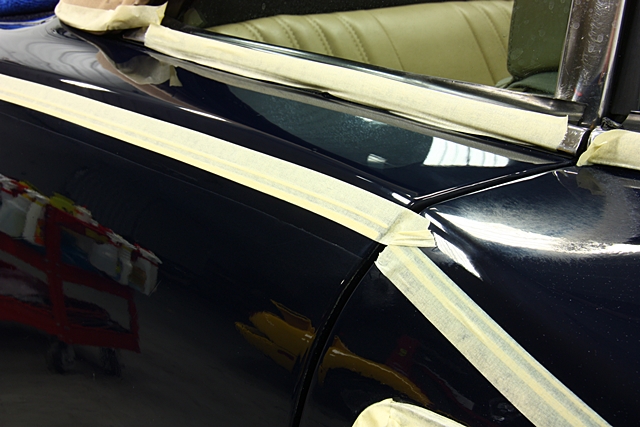
Once the compounding was completed, you can see that the Fiat had already gone through a tremendous transformation, and the paint once again showed its true color; showing gloss and depth as well. Despite the fact that it looked quite good already, it was far from finished!
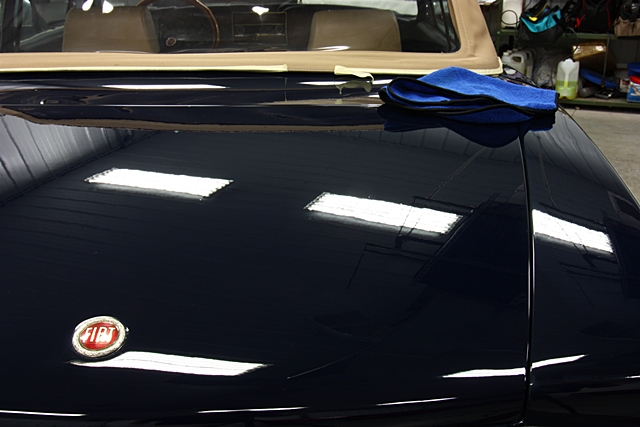
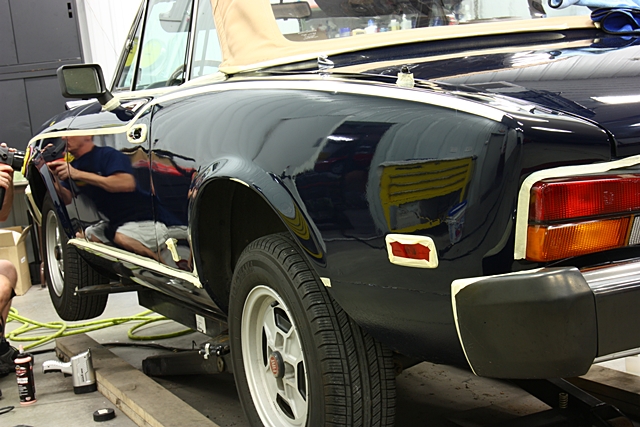
While inspecting in the Brinkmann LED, you could see a tremendous amount of clarity had been restored even before final polishing. Overspray has been removed, and swirls and scratches had been corrected. The spots you’re seeing are towel lint…not defects.
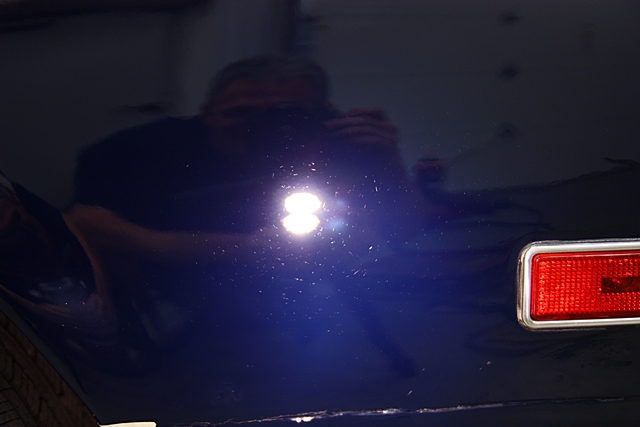
The Fiat is looking good so far…
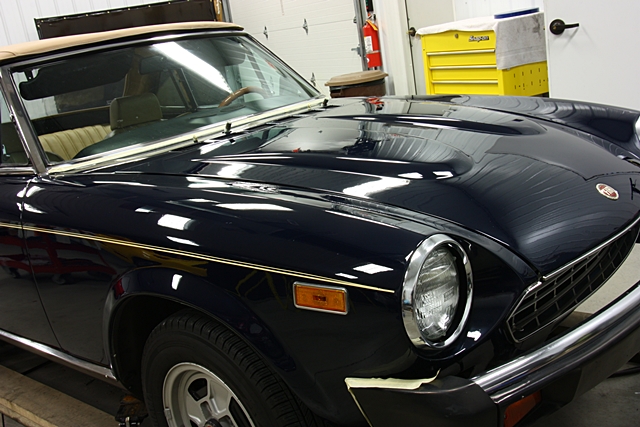
Final Polishing for a jewel-like finish!
I think this has been the year of finicky paints that don’t like to finish down perfectly, and this Fiat was right in there with the best of them. I tested many different combinations on the rotary, but even the finest polishes and pads in my arsenal came up short. While they would pass the fluorescent light test and even the sunshine test, they wouldn’t meet the 2″ test in the Brinkman LED. You had to look hard, but you could still see some very light traces of rotary swirls. Sure, these couldn’t be seen unless your eye was 2″ away from the surface using an LED light, but just because you can’t see them it doesn’t mean that they don’t exist! I strive for perfection, so that method would not make the grade.
Fortunately this year I discovered that Sonax NTPC on the D/A with a finishing pad is almost always the perfect solution for these types of paints. I could get the paint to finish down to meet all light source and distance tests, and it is quick and easy to use.
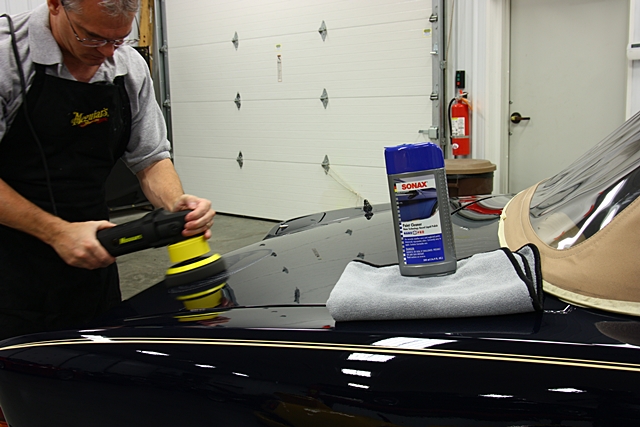
When dealing with finicky paint like this, especially with single stage, it is important to change out your polishing pads frequently. The pads quickly get saturated with a combination of polish and color/paint residue from the finish, and will reduce the correcting and finishing capabilities. Even with as small as this car is, I went through about 4 fresh pads during the process. You can see here that the pad on the left has turned blue from the paint transfer, and the one on the right is a fresh one. Keep the pads fresh and you will be rewarded as a result.
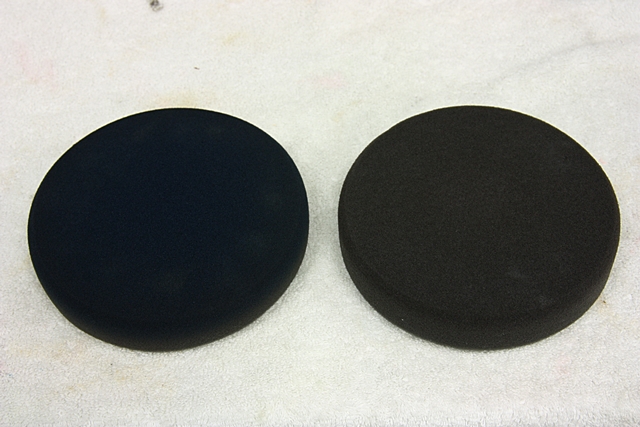
Once the finish polishing was completed, I topped off the car with arguably the best bang-for-the-buck wax out there: Chemical Guys Hardcore XXX. It looks fantastic, it’s ridiculously easy to use (not finicky!), and it sells for only around $25.

Fiat Spider Final Photos!
OK, I’ve managed to cram over 4 solid days worth of work in this short article, and I appreciate the fact that you’re still reading to see this project to the end. Now I’d like to share some final photos so you can see the huge transformation that this car went through.
Before:

And after:
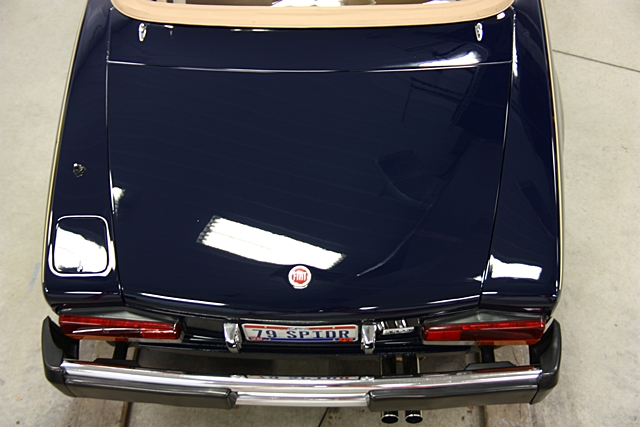
Before

And after
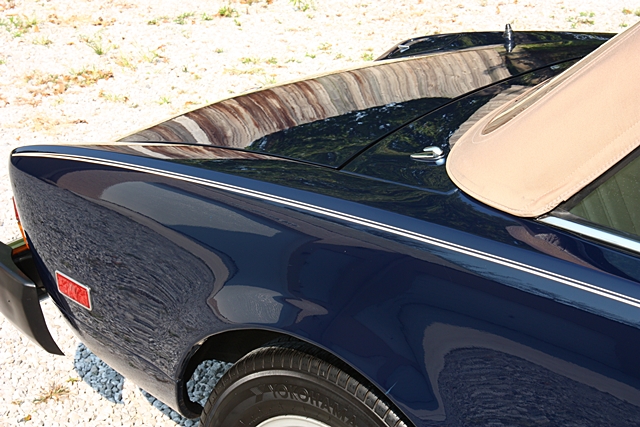
And some random after shots!
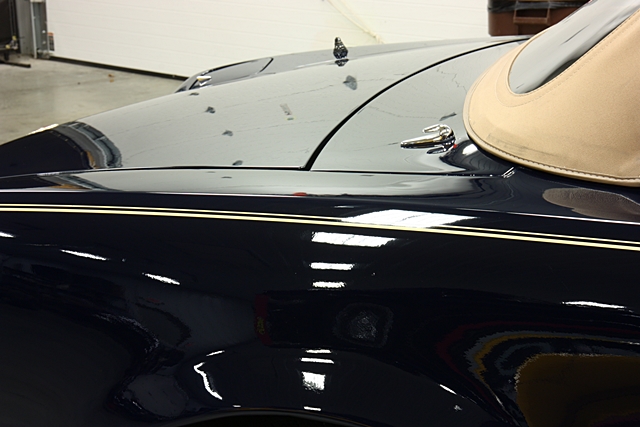

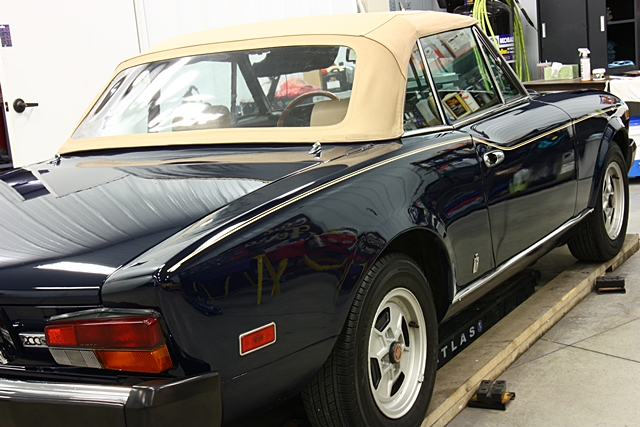
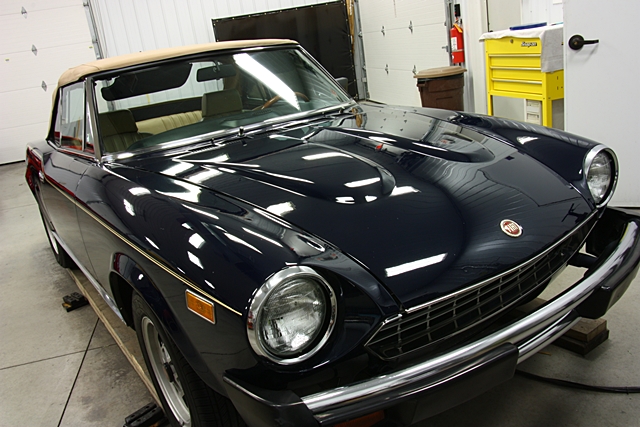
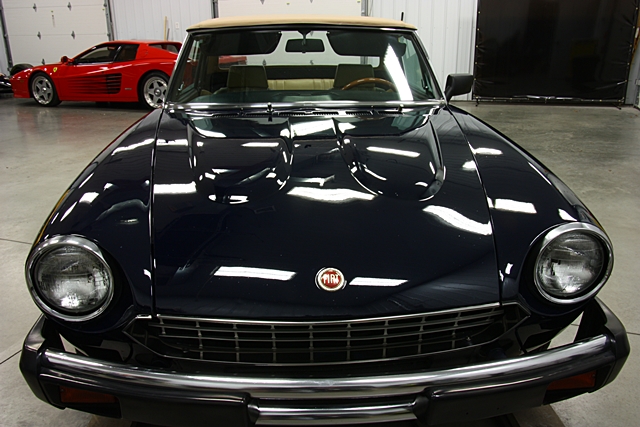
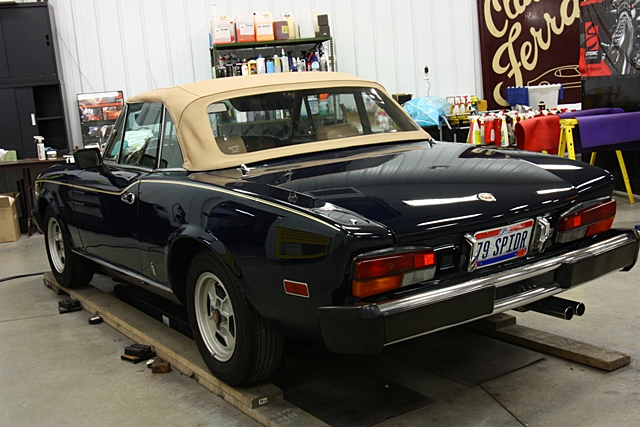
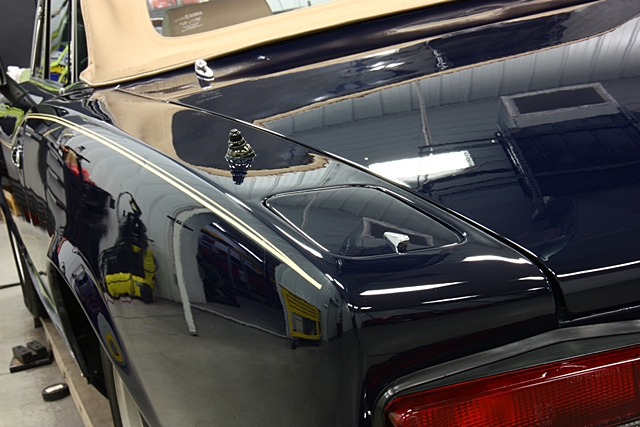
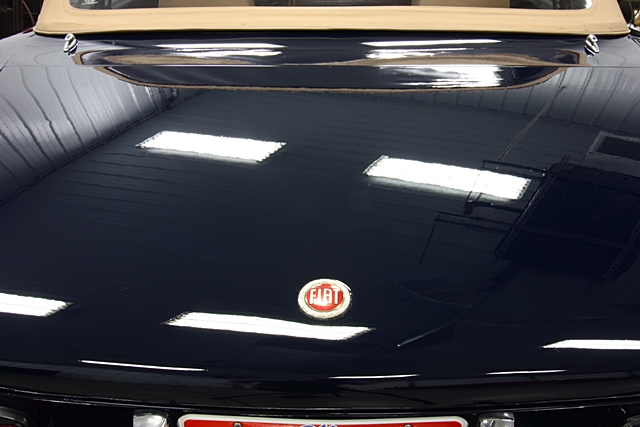
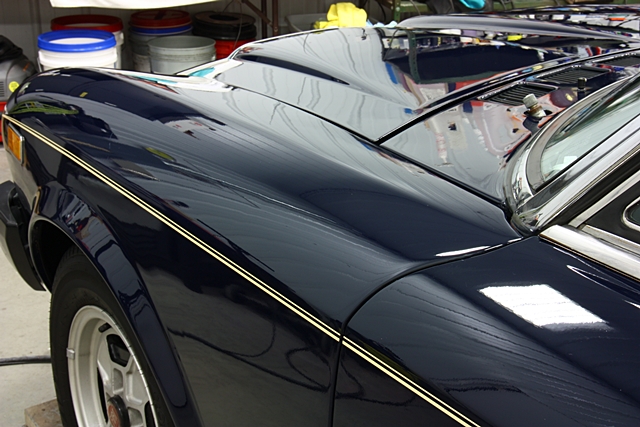

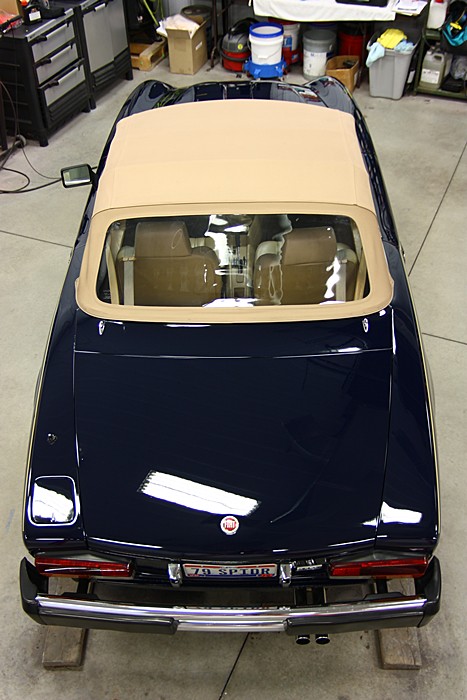

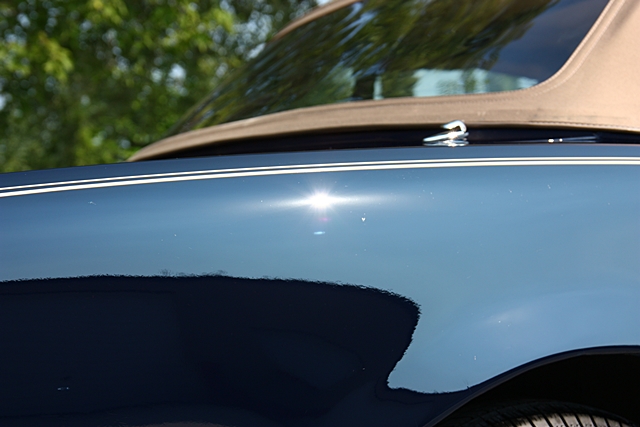
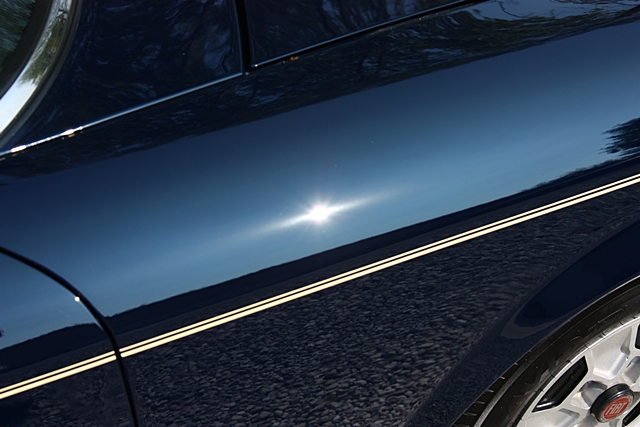
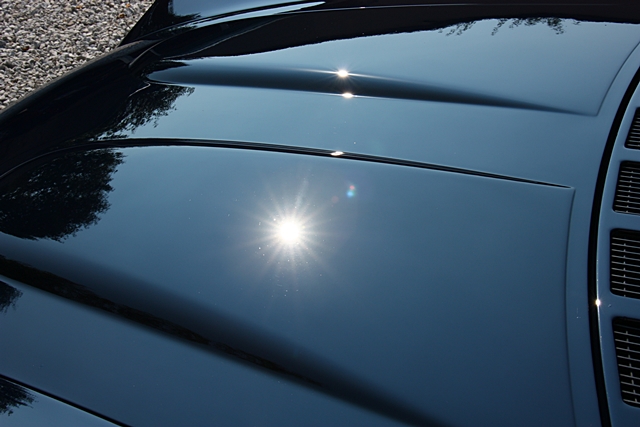

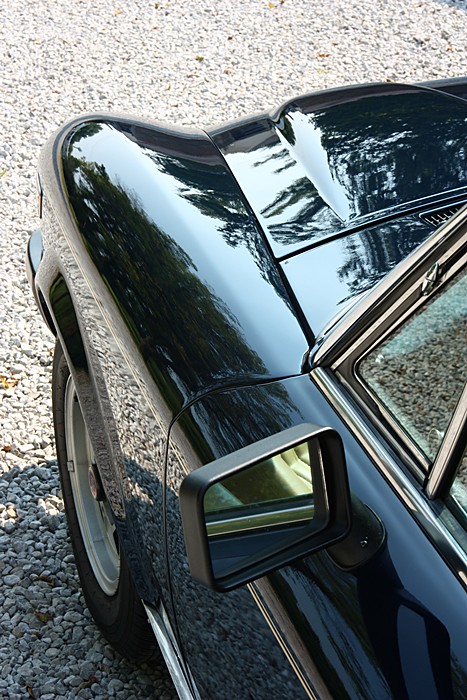
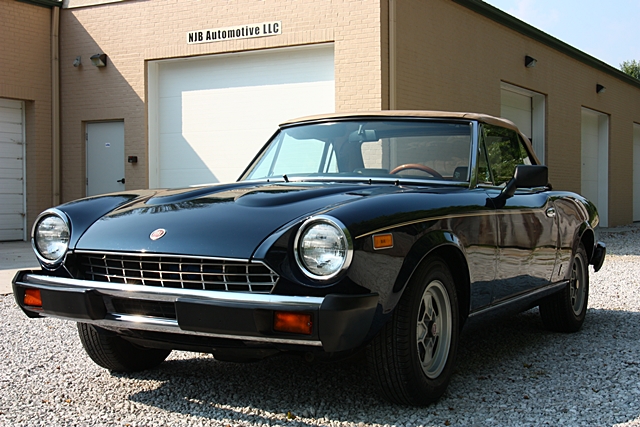
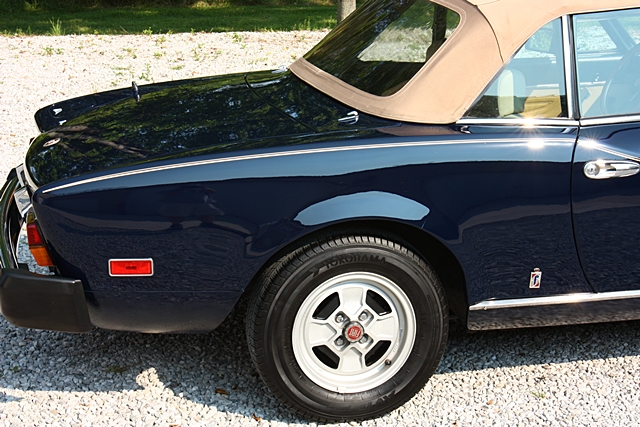
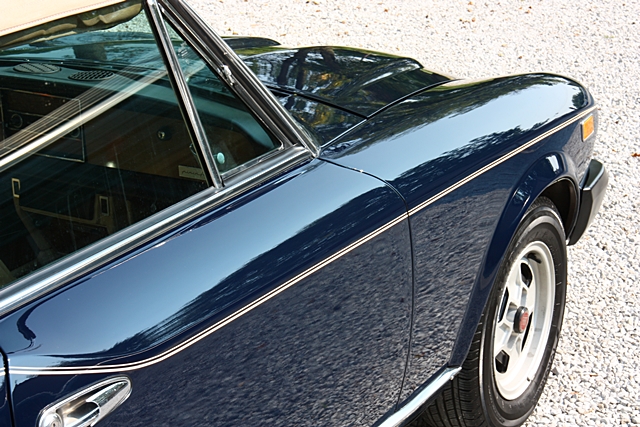
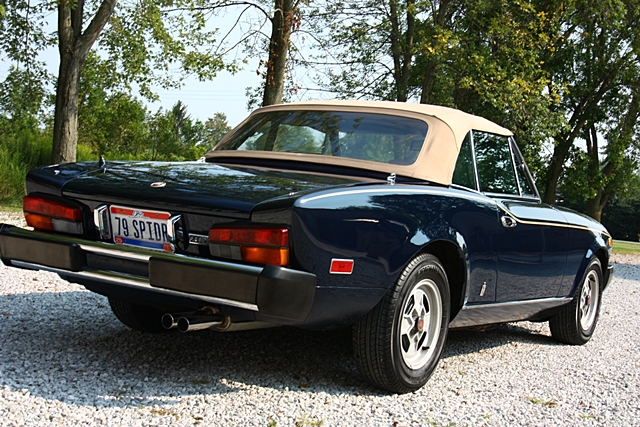
And the final shot from a few days later at the local Italian car show:
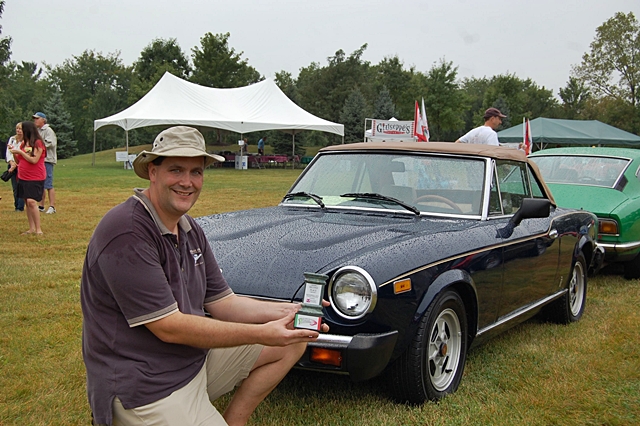
A message from the owner of the car:
Todd… What can I say?! THANK YOU for saving my baby! Essentially took the car right from Todd’s shop to the show field the following day and took home a trophy!
From despair to jubilation. My heart was in the pit of my stomach when I discovered the paint overspray. I am so glad I found Todd at Esoteric Auto! He is a MASTER OF PAINT restoration. An artist… Thank you!
Jon Logan, owner of the 1979 Fiat Spider
And as an added bonus, I shot some video of the car before, during, and after so you can get a better feel for the transformation it went through. Be sure to select at least 720p on the video resolution to see it in high definition.
Thanks, and please feel free to share your comments and questions below, and don’t hesitate to share the link to this article on your favorite forum or social media!










Todd, wow that was an awesome transformation. I love seeing work like this…i really can’t say much more other than that was really amazing.
I did have one question though. It looks like the car had a cloth or vinyl top? How did you get the overspray off of it?
Again, great work.
wills
Todd did amazing work and the car looks great. Fortunately, while in the storage unit, the top was down and tucked under the tonneau boot cover. Todd didn’t even mention in the article above that he also cleaned the overspray off the seats and even off the lenses of my gauges! Amazing details.
It was a shame that the following day’s car show was met with torrential rains!! At least the car was clean for 24 hours!
Thanks again Todd!!!
Jon
Thanks for checking in Jon…you’ve got a great car there and I appreciate the fact that you trusted me with this restoration-level job!
Thanks Wills. As you will see from Jon Logan’s response below (the owner of the car), the top was down and fortunately the overspray came off pretty easily on the interior.
EPIC!!!!!!!!
Thanks Eric!
Holy crap!
Todd-
I LOVE the innovative use of the Megs MF pads and D300. If I am not mistaken, Megs does not recommend the MF system for non-factory paint? Any comments on the “off-label” use of the system with a single stage re-paint? (Besides what you had posted in the article regarding frequent pad cleaning and changes?)
Nate
PS- What a disaster! I don’t think I could have handled finding my car in that situation….
Nate,
That’s more of an issue on the finishing portion of the system, and not the compounding. In many cases, aftermarket paint does not like the D/A action for finishing when using the Megs Finishing Discs / D301. I use the MF Cutting Disc and D300 all the time on aftermarket paint with no issues whatsoever.
Todd,
You never fail to amaze me with the work you do.
Thanks for the write up.
Thank you Chuck…glad you enjoyed it! Challenges of this level don’t come around all that often, and when they do, it’s great to share the results and processes with everybody.
Todd, you truly are an artist. Keep up the fantastic work.
Thank you Lee…I’ll give it my best shot!
Amazing work Todd! I had been waiting for you to post this one!
Thanks Chad. I know you’re into crazy details like these!
Todd, I’m blown away by this. Your work is at such a high level that I will always use it as the goal I will attempt to attain with my BMW 745i, though I don’t think I will ever get to your level of expertise. But I’ll continue to try!
It’s such a pleasure to see this level of craftsmanship and attention to detail in an America which tends to focus on ‘quick fixes’ and continual compromise.
Thank you and thanks also to the owner of this car for sharing this with us. That Fiat is such a pretty car!
Thank you Brian. All of the DI Blog authors and I take this same level of detail and personal pride in the work that we do, and we’re always happy to hear when we’re able to inspire others in the process.
Thanks Brian. I think it is a pretty car too. Doesn’t have to be a 6 figure exotic to turn heads. HA!
Doesn’t have to be a 6 figure exotic to turn heads. HA!
I was fortunate in two ways…
1. I found Todd!!!
2. The painting company’s insurance covered every dime!
Jon
Unbelievable work, great job! You can really see the quality of the final paint finish in the sun shots. Guys like you continue to show the potential of the D/A, for cutting and finishing, even on worst case scenario vehicles, like this. Thanks for posting it up.
Thank you Derek. D/A = Winning!
Todd…WOW..unreal….totally impressed..another perfect job from the master..
Thanks Kevin!
Todd,
Every time I see a post from you on the Ask A Pro Blog I can’t wait to read through it and see the results that you achieve. Thank you for taking time out of your busy schedule to write such an in-depth article. I think I will be picking up the Sonax NTPC based off your review and results, it seems like it is an incredible product.
Thank again!
-Kody-
Thanks Kody! Yes, on soft paints, NTPC is a perfect product to have in your arsenal!
Todd –
Would you have used the Klasse on the rear window had the top been up?
Mike,
I have a plastic polish designed specifically for convertible windows like this that I most likely would have tried.
Todd, thanks for sharing another tragic to triumph story in such depth!
The use of 8K and 12K grit was something I didn’t know. Is this kind of grit a good compromise on modern paints between localised ‘deeper’ correction but not toomuch CC removal? I would like to try out wetsanding, but I am rather intimitaded so far by its agressiveness.
Thank you in advance for the reply.
Kostas
Thanks Kostas.
Grits like the 8K and 12K are much to fine to pull out scratches from the surface. I suggest you find yourself an old beater car or a spare panel to practice on with your basic 2K and 3K abrasive papers.
Thank you Todd. I will try that.
Hey Todd, Great work. I wanted to say that I couldn’t agree more with you about bringing something like that to a body shop. I work at one and what you said about the repaint or aggressive sanding is 100% true.
I have a question about the towels you use. What is your “go to” for wiping off D300 and oils/carriers from the Sonax product? Just looking for a good MF towel to use for removing polish and wax that won’t instill marring and figured something like this car and the super soft black lambo posted recently on Autopia would be perfect test subjects. So if you don’t mind sharing, what did you use? I saw two in the photos, one blue with black edging and one gray with black edging. Brands?
Great article, thanks
Mark
Thanks Mark.
My usual go-to towel is the DI Great White. I have a ton of them and they are fantastic towels. The ones pictured are towels from Chemical Guys that I am trying out…great towels and very similar to the Great White.
I just finished the article on the Fiat with an over spray problem. Very good work !!!!
Occasionally I also have customers who ask me to correct similar problems, but want to retain as much of the original paint and texture as possible.
Thanks;
Dave
Thanks, David!
Todd,
Very nice work, what a save!
Danny Ruelas
Thanks Danny!
If this forum allowed BBcode, there would be mutiple icons of two thumbs up, bowing and drooling. That transformation was nothing short of a miracle!
Thanks Ron!
Quick question, I have read all your posts and you seem to be a wet diamond guy, but for this one you used the chemical guys hard core. Did you try wet diamond and not impressed with results. I love wet diamond but always looking for the best wax available, I have very finicky customers, as well as myself.
Also, on the overspray. I have always used lacquer thinner with great results. Was your concern the older paint might be lacquer? I have removed crazy overspray with lacquer thinner, hit it with chemical guys ez cream then wet diamond with awesome results.
How did you get the overspray off the top. I have never encountered a soft top.
FYI, I started using the wet diamond after your write-ups, and have been very happy with results since. I just added the chemical boys excreme before the wet diamond and could not believe that the wet diamond could look better.
Thank you again for the info, your info has definitely made be a better auto detailer
Dave,
I went with a hand-applied wax instead of a machine-applied sealant for several reasons. For one, my finishing polish has a carnauba in it, so I’d most likely get a better bond with a carnauba-on-carnauba as opposed to a sealant-on-carnauba. Secondly, paint this soft and finicky could potentially show a little marring if I used another machine step (with BFWD)…so applying a wax by hand made more sense.
This was a single stage paint, so lacquer thinner wouldn’t have been advised.
The top was down and covered, so it didn’t receive any overspray.
Thanks,
Todd
Todd, Amazing job you did on that fiat!! It inspired and motivated me a great deal. Every job that you do teaches me more and more, furthering my skill level as a detailer.
Thank you Justin. I try to make these educational, and not just “see my work” articles! The goal is to get people to try to understand the thought processes that go on during a detail and why you want to use certain products / techniques to achieve your desired goals.
Wow that was insane, I can’t imagine how the owner felt when he first saw the car covered in that green paint. Amazing save.
Devon
He was very upset…I can assure you that!
Thanks,
Todd
Todd you missed a spot,no seriously um amazing wow!!!!!!!! A true craftsman is right, it is a pleasure to see this this level of detail in a world were it seems nobody takes pride in there work anymore!!!!
Thank you kindly Tony…much appreciated!
Amazing word as usual Todd! Although I always enjoy seeing the exotics you typically detail, it was great to see those same techniques applied on a slightly more pedestrian car like the Fiat. I really appreciate all the effort you put into these write-ups, and Im looking forward to the next one!
This is just another stunning example of what you are able to acheive. Todd you are the God of Detailers and I want to thank you personally for making this video. I have a couple of older classics that suffer from paint overspray, but otherwise would be real lookers. I’ll have to take your advice on how to make that transition possible and make it look as easy as you do in all of your posts. I look forward to your write ups and continue to be inspired by your brilliant detailing work! -Seth
Thank you for the kind words Seth…I’m glad that you have found my articles to be helpful. Have fun bringing those old classics back to life!
Question for using clay bar prior and/or after portions of car are painted
I am having two 2004 S430 black mercedes doors repainted, one fully as it is being replaced and another just the lower section and hood rock chips painted.
I see a black paint requires the lightest touch/finest abrasion to minimize marring.
I know that 60 day outgas is needed for painted parts before applying a sealer/wax.
after painting i guess i would clay bar both new paint and overspray areas – the whole car and simply be careful to wax only the areas without new paint. I take it i should have an electric buffer and some compound capable of reducing / eliminating marring and that this could be applied over much of the car but focusing on known marred areas. It does seem odd that i would want to clay bar a newly painted area and run the risk of marring and complicating any potential followup if needed with the shop painting the car.
Great work. I’m trying to restore my ’82 Fiat Spider so I hope it looks just as good as this when I am finished.
Hi Todd, this is just another stunning example of what you are able to achieve! Also, the overspray what if they have always used lacquer thinner with great results. Was your concern the older paint might be lacquer? All the best!